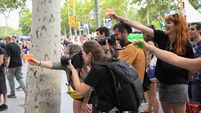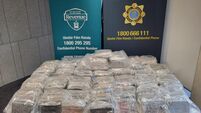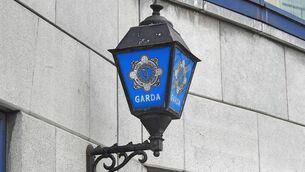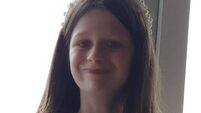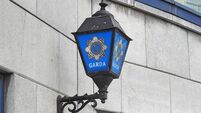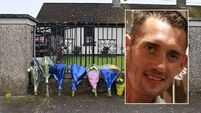'The exclusion is a fresh injustice. My sister is buried there, her memory matters'
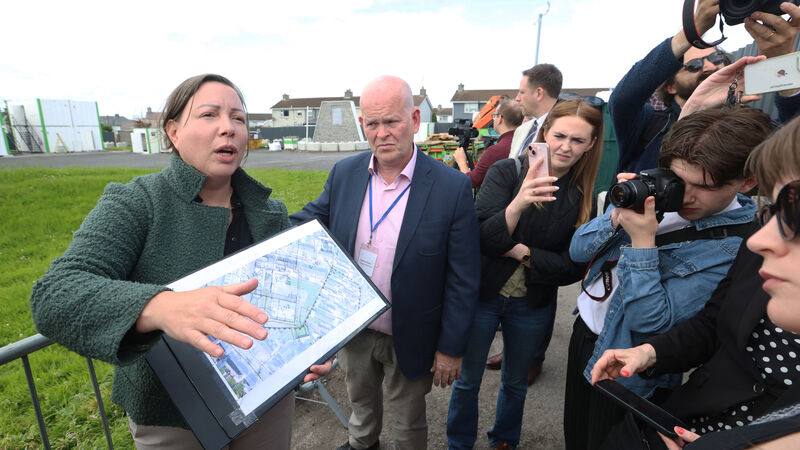
Forensic archaeologist Dr Niamh McCullough surrounded by media at the excavation site. Picture: RollingNews.ie
A survivor of the controversial Tuam mother and baby home searching for her sister who died there has criticised the government for not being “consulted or supported” so she could attend a family event at the burial site on Tuesday.
Margaret Byrne, who now lives in Vancouver in Canada, has broken her silence to speak for the first time about her late sister.
Research led by local historian Catherine Corless indicated there were no burial records for 796 babies and young children who died at the Co Galway institution from 1925 to 1961. Ms Byrne’s sister is among those who died.
The Tuam babies exhumation will get underway on Monday July 14, and events have been held at the burial site of the children for the past two days.
On Tuesday, around 40 families of the children and survivors met with the director of the intervention Daniel MacSweeney and forensic archaeologist Dr Niamh McCullough.
They held a private gathering at a viewing point at the site where preparatory works are underway.
Ms Byrne could not make the trip because she was not consulted about the event, she said.
“The recent decision to exhume the remains of the babies buried in the institution where my sister is has reopened old wounds. Families like mine were not consulted, informed nor offered any support to attend these incredibly sensitive and emotional events.
Ms Byrne said she is speaking for herself and her mother “who never had the chance to speak, for my sister Kathleen Ann Glynn who died...under horrid conditions and cruelty by these nuns, and for my youngest child Kevin who is no longer with me.
“What was done to us has consequences that stretch through time. We deserve more than silence, we deserve justice, dignity, and the right to be heard and included."
Her infant sister Kathleen Glynn who was born in the Tuam home, died on February 22, 1948 when she was three and a half months old.
She is listed among the other 795 children who died there, and her cause of death was “whooping cough, one-month, cardiac failure, certified”.
Ms Byrne said her mother gave birth “under conditions no human should endure. From the beginning, my life was shaped by trauma, stigma, and abandonment".
She described the environment she went into as an infant as “not one of safety or care, it was one of judgement and cruelty.”
Despite leaving Ireland and moving to Canada Ms Byrne endured more suffering when she became a mother herself.
“I have also been living through the devastating loss of my own child,” she said. “Grief compounded by a lifetime of trauma I never chose and never deserved.
A statement from Ms Byrne was also read by Anna Corrigan, who runs the Tuam Babies Family Group at the site of the exhumation on Tuesday.
Ms Corrigan, whose two brothers died in the home, was joined by Annette McKay who also has a sister in the burial site.
She said: “It is a disgrace that the minister for children was not here today. We got a last-minute response from the Taoiseach making his apologies, but that was all.
“I am shattered now at the moment; it is a small light at the end of a very long tunnel. I am glad it is commencing, and the ground is broken next week.
“We might have more questions than answers at the end of all of this, but I am really glad this is starting.”
Ms McKay’s oldest sister Mary Margaret O’Connor died at six months old on June 9, 1943, from “whooping cough, two months, cardiac failure, certified”.
Her mother Maggie O’Connor had been raped while in Lenaboy Industrial school and was sent to the Tuam home where her baby died.
“My mother was told to get out of the home and the nuns told her 'the child of your sin is dead, now go’. She was only 18 years old." she said.
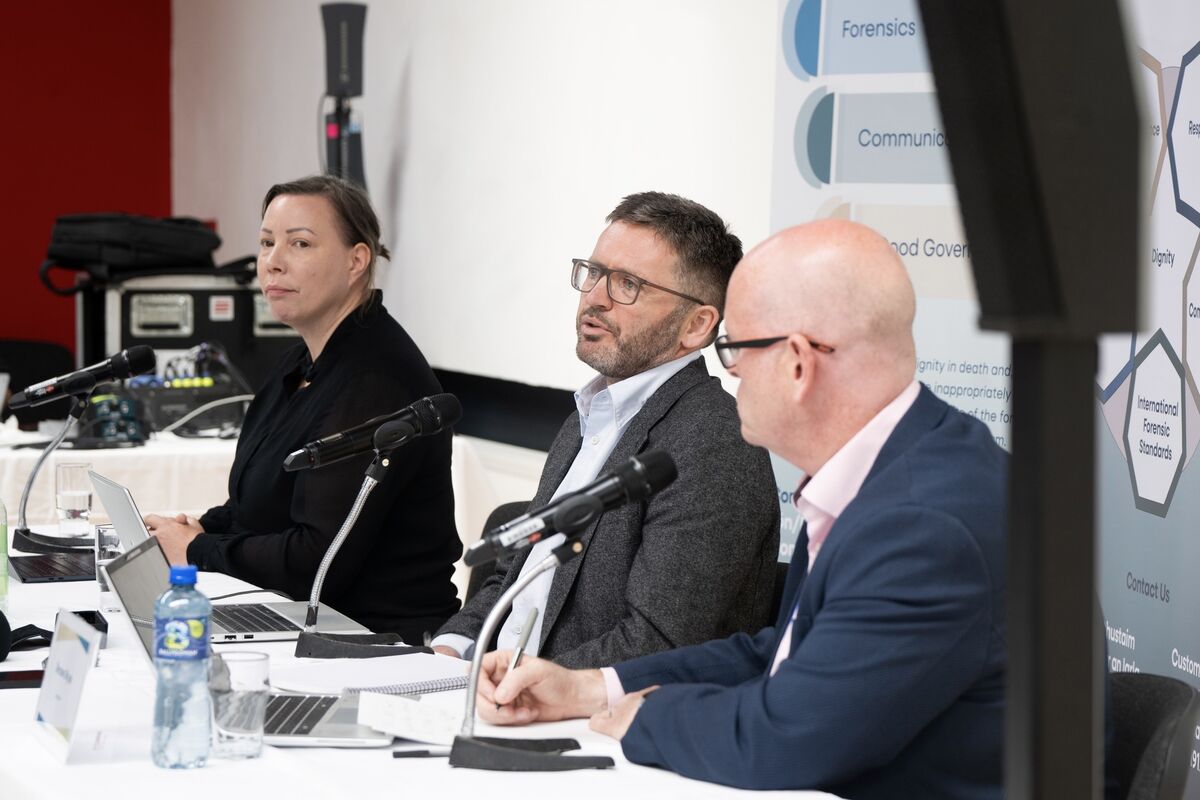
“She held that secret until she was 70 years old and broke down when she met my grandson. I didn’t let it go and drove back to her that night, and she told me about the little ‘bonnie baby’ she had in Tuam, that she carried around on her hip.
“It is appalling what happened and the Irish State allowed it; the nuns did what they wanted.”
The children who were in the care of the Bons Secours Catholic religious order, died between 1925 and 1961 while the home for unmarried mothers was in operation.
The government was the regulator of the homes all over Ireland at the time. However, up to 9,000 children died in at least 14 homes and four county homes, a Commission of Investigation found in its final report in 2021.
The Tuam mother and baby home scandal, which made international headlines 11 years ago when Catherine Corless uncovered their names, paved the way for those institutions to be examined.
The Commission produced a lengthy report in 2019 on the burial practices of the homes at the time, but later found that “religious orders, particularly the nuns involved, were often evasive in providing information about burial practices and locations, particularly regarding unmarked graves of children".
The report said: “This lack of transparency hindered efforts to locate and identify the remains of those who died in the homes. Survivors and relatives of those who died in the homes have also expressed dissatisfaction with the information provided, sometimes finding it inaccurate or misleading.
The lack of information “has caused further trauma and distress for survivors and relatives who are seeking answers about their loved ones", the Commission said.
Ms McKay said: “I had a very bad reaction when I arrived at the site. It all hit me, I felt like I was punched in the guts. It is a very surreal experience to go back and be stood in one particular spot.
“The reality is, daylight has now been shown on the site. Now what are we going to learn from that site, what is that dirty little place really going to show us, what really went on there?"





